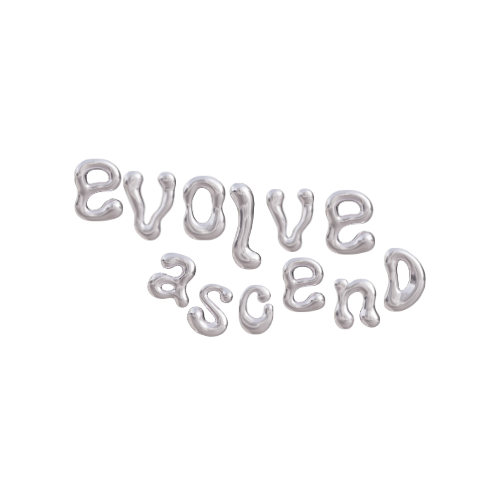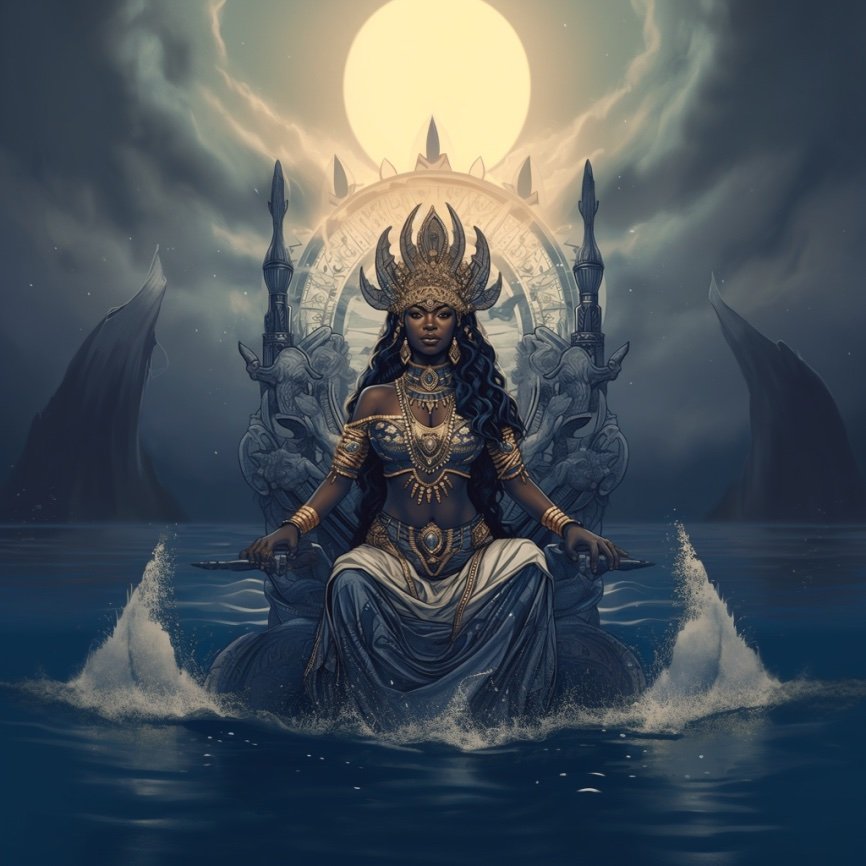Dancing the Divine Waltz: Exploring Femininity in Santería's Mystic Traditions
At a time when I was most lost in my life - spiritually, physically, and mentally - I found myself alone in paradise. While others were delighting in the feverish sun, cocktails, and swaying palms, I wailed with fear and desperation. The laguna next to where I lay my head had turned from crystalline water into a heaving cesspool of dengue-ridden mosquitos and trash in a matter of weeks: a metaphor for the last charade of a naive child. The path to the mystical, virgin beach that had captivated me only months earlier was now the site of a reported rape. The eyes of locals who were so eager to take my money in the past now looked at me with pity. I officially could no longer determine who I was: a process of dissociation that had been accumulating for decades.
And as I stood on my empty balcony, watching the ferocious waves hit the scalding sands, I received a visitor. The giant black vulture situated itself mere feet from me, balancing on a palm branch and staring relentlessly. I was superstitious and conscious enough to realize that this was not a normal occurrence. Immediately, I felt that I was under a watchful eye of some kind. I left my treacherous Eden behind me and stumbled to the nearest airport. Things did not get immediately better after that point, quite the contrary. When you realize you’re drowning, it’s already too late. I soon crashed into the most severe depression I’ve ever experienced, which manifested in destructive drinking, paralyzing anxiety, and an internal abyss. I somehow made it to the place I called home and soon recognized just how deeply wounded I was.
I cried for help, and it came in the form of a deeply spiritual friend. I told him about the dread, the haze, and the vulture. “That was Oshun,” he told me. “You and her got somethin’ goin’ on.”
And thus was my introduction to Santería. The more I talked to this friend, a santero or priest in the religion of Santería, the more intrigued I became by this being who had witnessed me and made her presence known at arguably the lowest point of my life.
Is there a religion alive today in which women are actually revered? Where homosexuality is respected as the ability to walk between two worlds? Where sexual experiences are discussed openly and not shamed?
There is, and despite efforts of racially motivated prejudice to subjugate and denigrate it, Santería flourishes within communities in the New World. As a diasporic religion, Santería is the syncretization of West African traditions of the Yoruban people and the dominant religion of the conquest of Latin America - Catholicism, united by the Trans-Atlantic Slave Trade.
Unlike some religions - hey, we’re not naming names here - women can become priests in Santería. They have the same rights as men and are revered not only for their baby-making abilities but after menopause as well. The transformation women undergo into menopause is seen as a metamorphosis into another type of being and is highly respected and celebrated.
In the article “Sexuality discussions in Santería: A case study of religion and sexuality negotiation,” Salvador Vidal-Ortiz cites his own research as well as that of M.A. Clark’s article “Where men are wives and mothers rule: Santería ritual practices and their gender implications” when referencing the relatively liberal structure of the Santería cultural-religious tradition.
“While the religion has a hierarchical structure that enables a seemingly functional division of labor, sexuality-and gender-based restrictions are evident; for instance, it is generally assumed that no gay male or woman of any sexual orientation can become a Babalawo, the highest priest in Santería, or play the Batá sacred drums. In spite of these restrictions, 30 to 50% of practitioners are estimated to be gay or lesbian and most practitioners are said to be women. The religious-cultural practice also offers leadership roles for gay males (such as the Oriaté, a priest who also works divination) and other responsibilities such as the preparation of a possessed practitioner and the making of altars or initiation garments. Unlike most mainstream religions, Santería incorporates gay-and lesbian-identified practitioners in part because of the availability of such roles, and all practitioners negotiate lesbian and gay participation. Within the religious-cultural practice, practitioners teach each other about many things, including sexual matters and discussions about sexual orientation.”
Often misinterpreted as a polytheistic religion, Santería has one great creator with three representations, that being Olodumare, which is considered both male and female. The link, often considered emissaries, between God and human beings are the Orisha.
In her graduate thesis, “Divine Women in Santería: Healing with a Gendered Self,” Elizabeth Tracy connects the presence of complex female Orishas with the ability of women to define themselves and become uplifted in their own lives.
“Santeria offers women divine female figures through which they may gain full self-awareness, discover self-love and create a gendered understanding of self that is not only self in submission to the other (man). Self-love is the starting point from which women can heal themselves. Females are able to recognize that love when society identifies the female gender in the divine.”
The religion of Santería is nature-based, sexually open, and not nearly as focused on taboo as other belief systems. Specific elements of the earth represent each Orisha and have the ability to manifest him or herself in the form of animals, trees, lightning, or any other fundamental component of the natural world. Santería is practiced mainly in Cuba, the Dominican Republic, Puerto Rico, Brazil, Mexico, and other places in the Western Hemisphere. It is a religion of immigrants, having been born under the vile constraints of slavery and now spreading through immigration to the United States and Canada since roughly the mid-20th century.
As my friend, the santero would say, “People think we just hang out and sacrifice goats and shake our asses. But it’s so much deeper than those stereotypes. Priests and priestesses spend their lives studying the signs, the symbolism and the history. We study nature. It’s a beautiful religion that has survived beyond all odds and efforts to keep it down.”
The tradition of Santería has 401 Orishas - male and female - thus, this is not an exhaustive list - more a brief introduction to the multi-faceted female and androgynous Orishas. (Please note that the spelling of Orisha names differs depending on geography.)
Some Orisha are colloquially referred to as “the ladies” and are entirely female deities, powerful and highly revered.
Naná Burukú is the Great-grandmother of all the Orishas, considered a wise woman and a witch.
Yemayá is considered the mother of all living things and ruler of the oceans.
Oya is a fierce female warrior considered by some to have been born male. She is the only female Orisha ever depicted wearing pants.
Oba is the Orisha of the sacred River Oba of Nigeria.
Yewa is the Orisha associated with the final resting place of the dead and watching over cadavers as they decompose into the earth.
Oshun is the Orisha of love, happiness, grace, elegance, and fresh water. Known to be the most beautiful Orisha of all.
Other Orisha are considered to be androgynous and occasionally depicted as both male and female, including:
Olodumare is considered the great creator of the universe, viewed as both male and female - or as neither.
Olokun is sometimes depicted as male but more often as female. Olokun is the ruler of the deepest, darkest depths of the ocean.
Obatala is considered the parent of all Orisha; Obatala is most commonly viewed as androgynous.
Iku is the Orisha of death. When she wants you, she comes for you—occasionally referred to as male.
Ibeji is the Orisha of joy, mischief, abundance, and childish glee; Ibeji is one Orisha but represents the first twin born on earth, typically depicted as one female and one male twin.
Dada is the protector of newborn babies and gardens. Occasionally seen as male, but most often as female.
Oshumare is an androgynous Orisha known as the deity of snakes and rainbows.
Inlé -is the Orisha of health and healing; he has many feminine features and occasionally dresses as a woman; however, he is considered a male Orisha and patron of homosexuality.




